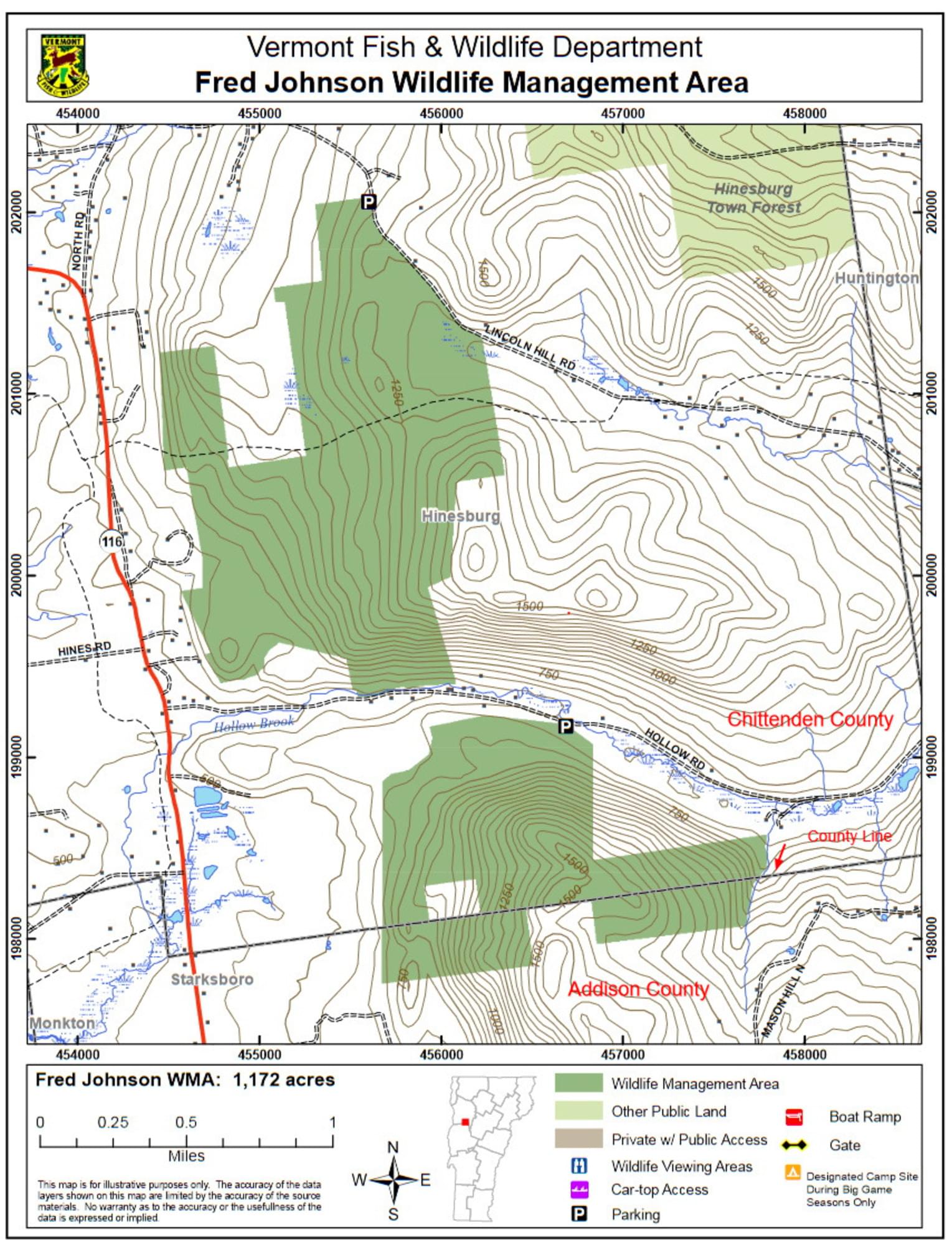
Fred Johnson Wildlife Management Area
Fred Johnson Wildlife Management Area
Hinesburg, Vermont 05461
Fred Johnson Wildlife Management Area brochure and mapTips for Birding
If you carefully keep your bird records by county, be sure to use the specific hotspots in Fred Johnson Wildlife Management Area so that the birds will be assigned to the proper county.
Birds of Interest
Fred Johnson Wildlife Management Area is home to forest and edge-dwelling birds including several warbler species, red-eyed and blue-headed vireos, wood and hermit thrushes, woodpecker species, and forest raptors. American woodcock, ruffed grouse, and wild turkey may also be found.
About this Location
Fred Johnson Wildlife Management Area (WMA) encompasses 1,172 acres of forested land in the town of Hinesburg. Elevations range from 500 to 1,500 feet. There are two parcels, one on the north side of Hinesburg Hollow Road, and one on the south side of the same road. The road follows Hollow Brook and a small part of the stream bank is included in the WMA. The area north of Hinesburg Hollow Road is on the west side of Lincoln Hill. The area south of the road is also on a hillside that rises out of the HollowBrook Valley. There is access to the northern parcel of the WMA via a parking area and log road on Lincoln Hill Road. To access the southern parcel one can park at the pullout with the WMA sign on the south side of Hinesburg Hollow Road.
Except for the small stretch of rocky streambank, the Fred Johnson WMA consists of forested upland. There are three types of stands. An eastern hemlock–yellow birch stand provides the best cover for wintering deer, offering a closed canopy to minimize snowpack. There are some young eastern white pine stands, a few of which were planted, with inclusions of planted red pine and a scattering of more mature white pine. There are also white pines growing in abandoned pastures, with various young hardwoods mixed in. The hardwoods would eventually become dominant and crowd out the pines without silvicultural intervention.
Content from Fred Johnson Wildlife Management Area brochure and map
Last updated December 3, 2023
